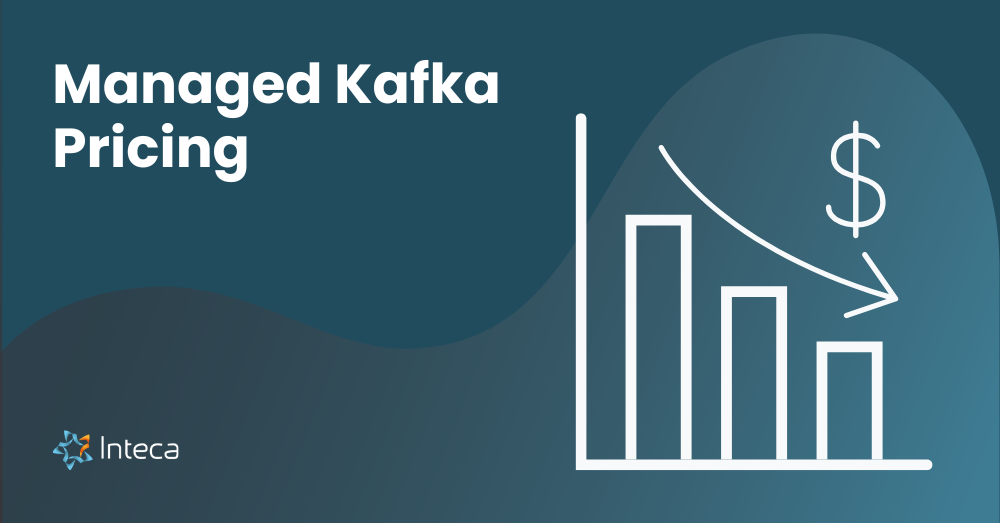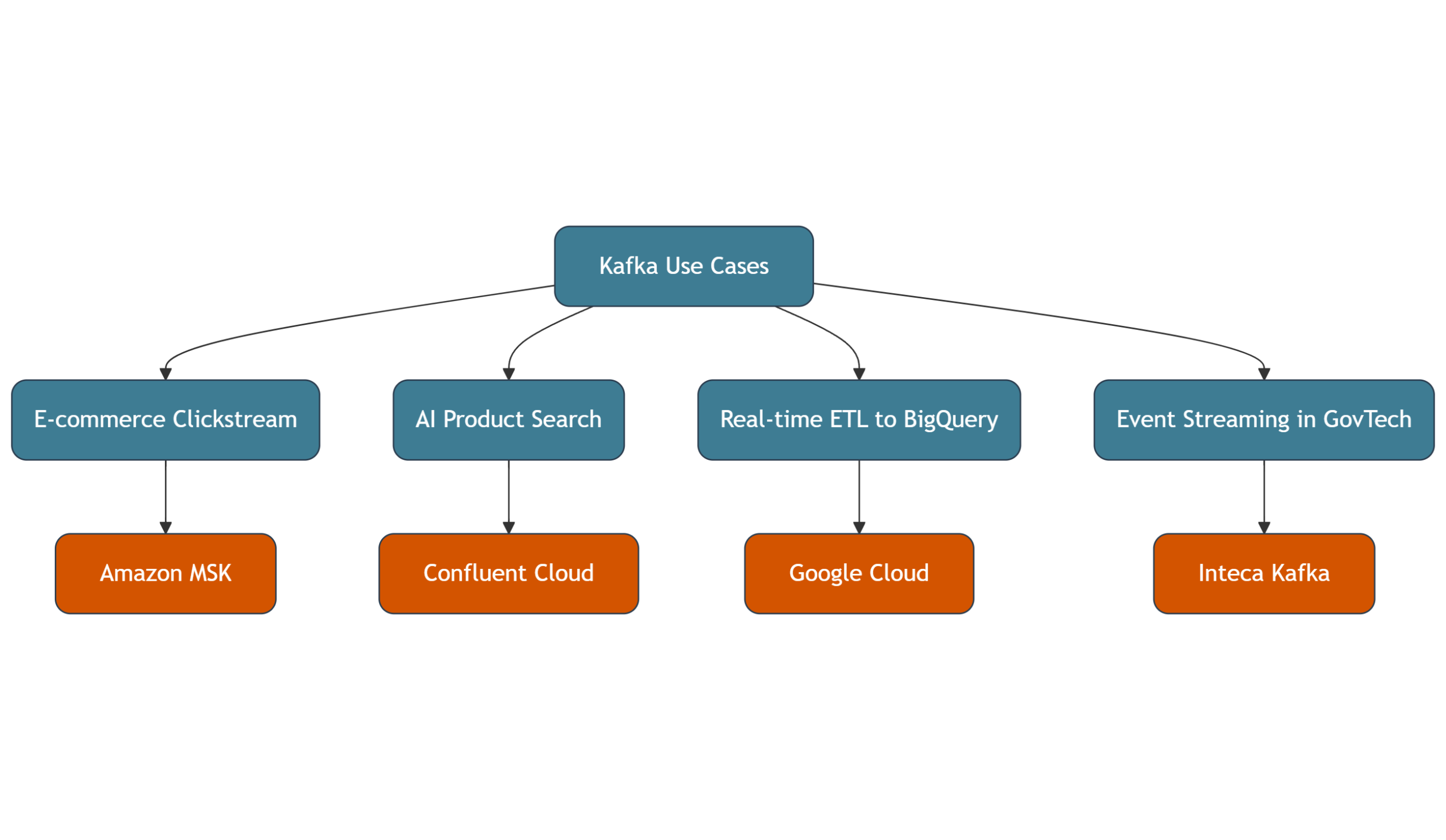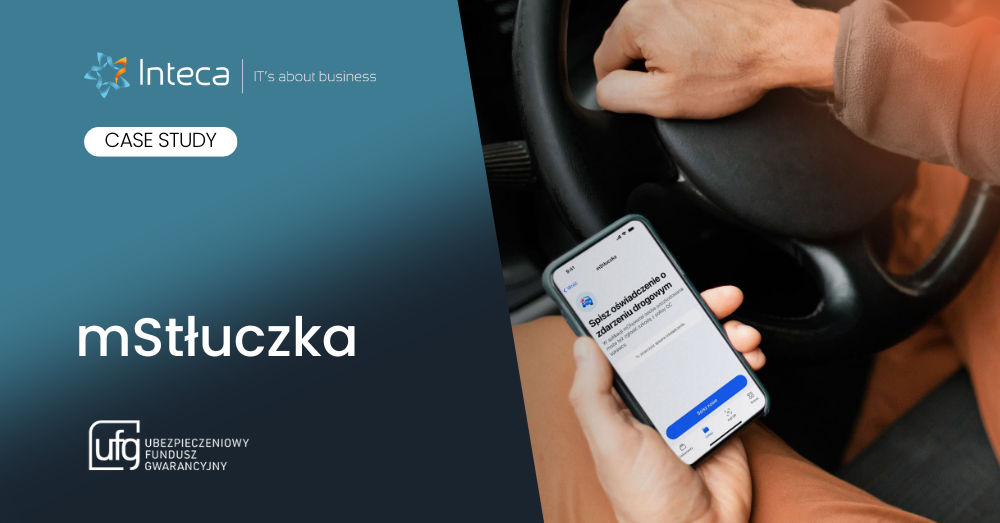Kafka pricing in the cloud era
Apache Kafka is an open-source streaming platform used to build real-time data pipelines and stream processing applications. While powerful, running and scaling Apache Kafka clusters can be operationally complex and cost-intensive. That’s why many organizations opt for Kafka as a Service via managed Kafka offerings from cloud providers like Amazon Web Services (AWS), Google Cloud, and specialized vendors like Inteca or Confluent.
In this pricing guide, we break down how Kafka pricing works across providers, explain key billing metrics, and help you estimate the cost of running a managed Apache Kafka service in production.
What drives the cost of managed Kafka?
Kafka pricing depends on several variables tied to how the Kafka cluster is provisioned and how much it’s used:
- Broker instances: Each Kafka broker runs on a virtual machine (or container). More brokers = higher cost.
- Throughput (MB/s): Data in real time is charged based on volume of data produced, replicated, and consumed.
- Storage: Kafka data must be retained for a period. Costs vary by GB/month.
- Kafka Connect and Connectors: Running a connect cluster and using Kafka Connect connectors (e.g., JDBC, S3) incurs additional charges.
- Data transfer: VPC egress charges and standard AWS data transfer charges apply when streaming data across zones or clouds.
- Replication: Multi-AZ or multi-region replication increases broker and network usage.
- Monitoring: Services like Amazon CloudWatch generate charges for custom metrics, alarms, and logs.
Kafka pricing models explained
1. Pay-as-you-go
- You pay an hourly rate per broker, per GB of storage, and per GB of data transfer.
- Example: Amazon MSK pricing includes charges per broker instance and per storage GB/month.
2. Provisioned clusters
- You select the instance size, storage type, and replication configuration.
- Good for stable workloads with predictable demand.
3. Serverless Kafka
- Amazon MSK Serverless and similar services allow you to run Kafka without managing brokers.
- Pricing is based on data volume and request rate.
4. Fully managed platform (e.g., Confluent Cloud)
- Includes advanced governance, connector support, and usage-based Kafka infrastructure.
- Kafka cost can be 8–24x higher than open-source if usage isn’t tightly controlled.
Amazon MSK pricing overview
Amazon MSK uses a pay-as-you-go model. Amazon Managed Streaming for Apache Kafka (MSK) provides a native Kafka service within AWS:
-
Broker instance charges: Based on the EC2 instance type and billed per second; newer Graviton3-based instances offer improved throughput and lower cost.
-
Storage: Charged per GB/month using EBS volumes, with optional additional throughput provisioning available.
-
MSK Connect Units: Pricing for Amazon MSK Connect is based on connector hours and GB of data processed.
-
Amazon MSK Replicator: Optional feature for replicating data between MSK clusters, billed per replicator instance-hour.
Amazon MSK is ideal when you want to run Apache Kafka within your existing AWS account, with native IAM, VPC, and PrivateLink integration, offering tighter control and better alignment with AWS-native security and networking features.
Confluent Cloud pricing highlights
Confluent Cloud also works as a pay-as-you-go platform. Confluent Cloud offers a fully managed Kafka service with added governance, stream processing, and AI-powered features:
-
Pay-per-use Kafka service: Kafka pricing is based on Confluent Units (CKUs) or Serverless compute usage, GBs of data transferred in/out, GB-hour of storage, and connector task hours.
-
Connector marketplace includes enterprise integrations like Oracle, Salesforce, MongoDB, as well as dozens of other managed connectors. Pricing is per task-hour and GB of data processed.
-
Real-time data streaming pipeline features like Apache Flink (billed per Flink Unit per minute), schema registry, stream catalog, stream lineage, and data quality rules, all available through tiered governance packages.
Confluent Cloud can be 8–24x more expensive than vanilla Kafka, but provides more than just infrastructure. It includes comprehensive stream governance, an optimized architecture with advanced metadata nodes and broker separation, built-in Apache Flink support, and enterprise-grade features that reduce operational overhead.
Google Cloud Managed Kafka pricing
Google Cloud now offers a native Kafka experience via its Managed Service for Apache Kafka (MSAK), separate from Confluent.
-
Pay-as-you-go model: Pricing is based on vCPU and memory usage, starting at $0.09 per vCPU-hour, plus storage and networking charges.
-
Storage options: Includes local SSD ($0.17/GiB/month) and persistent storage ($0.10/GiB/month) for long-term retention.
-
Network charges: Includes inter-zone ($0.01/GiB) and inter-region transfer fees, plus Private Service Connect fees for secure client-broker communication.
-
Can deploy directly on Google Cloud with full integration into IAM, VPC, and Google Cloud-native services.
Integrates seamlessly with BigQuery, Cloud Storage, and Dataflow for advanced analytics and stream processing workflows.
Inteca Managed Kafka Pricing: Red Hat-Aligned, Transparent, Built for Enterprise Scale
Inteca does not follow the usage-based, per-GB, per-message, or per-connector billing model used by hyperscalers like AWS MSK or Confluent Cloud. Instead, pricing is structured around:
-
Cluster size (nodes, CPU, RAM)
-
Deployment model: on-prem, cloud (your cloud or BYOC), or hybrid
-
Service tier: basic, high-availability, or enterprise-grade
-
Connector support: standard and custom Kafka Connect connectors (e.g., Oracle XStream CDC connector)
This approach ensures cost predictability, especially for regulated industries and enterprises that need to plan budgets reliably.
Key Pricing Metrics to Watch
| Metric | Description |
|---|---|
| Broker instance | Number/type of VM nodes running the Kafka cluster |
| Storage (GB/month) | Persistent storage used by Kafka logs |
| Data transfer (GB) | Egress from brokers to consumers or between zones |
| Kafka Connect usage | Number of connectors, connect cluster hours |
| Replication factor | Impacts number of replicas and total storage used |
| Monitoring metrics | Custom metrics via CloudWatch or third-party tools |
Cost optimization tips
- Rightsize Kafka brokers based on CPU/RAM needs
- Use Kafka Connect efficiently to minimize overhead
- Optimize replication and topic distribution
- Minimize cross-AZ data transfer
- Monitor with Amazon CloudWatch and dashboards
- Use open-source for dev environments or low-volume pipelines
Example use cases
| Use Case | Provider |
|---|---|
| E-commerce clickstream | Amazon MSK |
| AI-powered product search | Confluent Cloud |
| Real-time ETL to BigQuery | Google Cloud (via Confluent) |
| Event streaming in gov tech | (Inteca Managed Kafka) Red Hat by Inteca |
Choosing the right Managed Kafka service
When evaluating a managed streaming for Apache Kafka solution, consider:
- Choose Amazon MSK to use Amazon MSK in AWS-native apps with low setup friction
- Choose Confluent Cloud for advanced Kafka applications and AI-driven pipelines
- Choose Inteca for fixed-cost managed Kafka service, full governance, and open-source flexibility
There’s no universal solution. Align your Kafka operations, budget, and governance with the right platform — whether it’s Google Cloud, Confluent Cloud, Amazon Managed Streaming for Apache, or a developer-first provider like Inteca.





